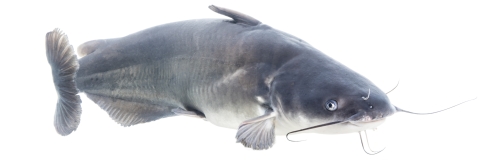Fishing time is here! Before you head out on your fishing trip, get that fishing pole out the closet, strip that old fishing line off of your fishing reel and replace it with some new fishing line. Pick up a can of spray lubricant and lubricate your fishing reel. Now you need to head on down to your local bait and tackle shop and find out what are some of the hottest lures for your favorite fish species during this time of year. Do you have the right lures to catch your favorite fish species. What is your favorite fish species to catch? Is it walleye, crappie, bluegill, largemouth bass, striped bass, red drum, black sea bass, flounder, Pacific or Atlantic salmon, or one of the many types of native trout species found within the United States?
Whatever your favorite fish species, please remember the following messaging: “Destroy! Don’t Dump,” and “Clean Drain Dry.” Please take special care not to spread non-native aquatic invasive species invasive species
An invasive species is any plant or animal that has spread or been introduced into a new area where they are, or could, cause harm to the environment, economy, or human, animal, or plant health. Their unwelcome presence can destroy ecosystems and cost millions of dollars.
Learn more about invasive species in America’s lakes, waterways, and estuaries on your next fishing trip. Aquatic Invasive species like the northern snakehead in the above picture and the blue catfish below, are both invasive, non-native aquatic species found in the Chesapeake Bay watershed.
First found in a Crofton Maryland pond in 2002, Northern snakeheads were then discovered in the Potomac River in 2004 and have successfully colonized the Chesapeake Bay watershed. Northern Snakehead are native to Asia and are listed as an injurious species under the Lacey Act, meaning they cannot be possessed or transported live. Snakeheads have also been found in rivers in New York, Pennsylvania, and Alaska. Believe it or not, northern snakeheads make excellent table fare.
Blue Catfish were introduced to a few rivers in the Chesapeake Bay watershed several decades ago. As a result, these fish have expanded their range throughout the Chesapeake watershed. Blue catfish grow large and eat many native species of the bay including striped bass, blue crab, shad, herring, and Atlantic sturgeon and possess the potential to cause a lot of harm to the Chesapeake Bay ecosystem. Lucky for humans, they are quite tasty and a good source of nutrition. States in the Chesapeake Bay watershed are working together to encourage recreational fishing for these catfish—and to develop and grow a commercial fishery as well.
Here are some suggestions for responsible recreational anglers that do not want to spread aquatic invasive species while fishing:
- Purchase a fishing license.
- Read the fishing regulations that apply to your target fish species.
- Ask your state fish and wildlife agency if there are any aquatic invasive species inhabiting the waters that you are about to go fishing.
- If you catch a fish species that you have never seen before, please try and determine if it is a native or non-native fish species.
- Never return a known aquatic invasive species back into the water
- And finally, you must be extremely careful when fishing with live minnows or live crabs. In many cases the live minnows you may be using may not be native to the waterbodies where you will be fishing in. Make it a point to ask the bait dealer if the minnows are native minnows. If not, please do not dump them in the water while they are still alive.
- We advise the same approach when fishing with crabs as bait. We ask that you never use green crabs (pictured below) for live bait because they are one of the most invasive non-native aquatic species that have been introduced in American waters.
Invasive green crabs (aka European green crabs) are shore crabs native to Europe and North Africa. Green crabs were likely transported across the ocean by ships in their ballast water. They have been wreaking havoc on the Atlantic Coast since the 1800s. In 1989, they made their way to the Pacific Coast. Since then, these voracious predators have slowly expanded north and south, either hitchhiking or floating in larval stages on ocean currents. They feed on mussels, clams, juvenile oysters, native crabs, and juvenile salmon.
As a responsible angler, you want to be part of the solution and not part of the problem. The last thing you want to do is contribute to the spread of aquatic invasive species while fishing during your next fishing trip. Wishing you “tight lines” on your next fishing trip and hope you are able to land your favorite catch!
We also wanted to remind you that if you happen to land a blue catfish or northern snakehead don’t hesitate to take them home. Both of these invasive species will make a delicious main course for any meal! What better way to fight the invasive species, than “Eat the Invasives!”






